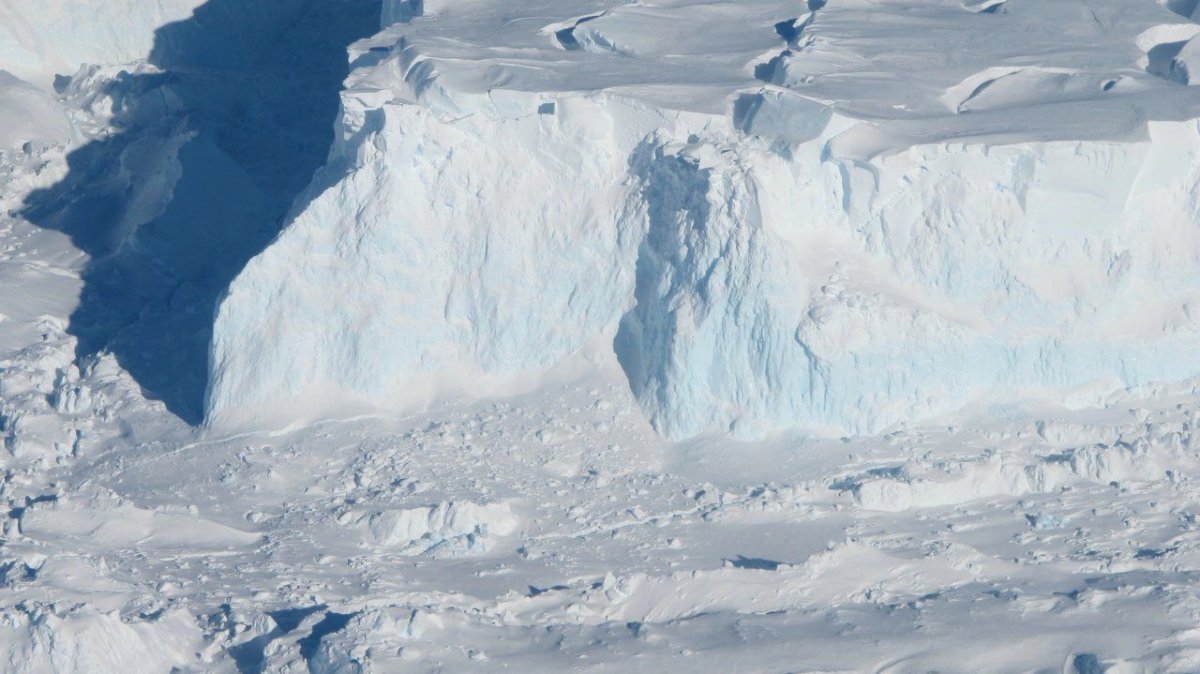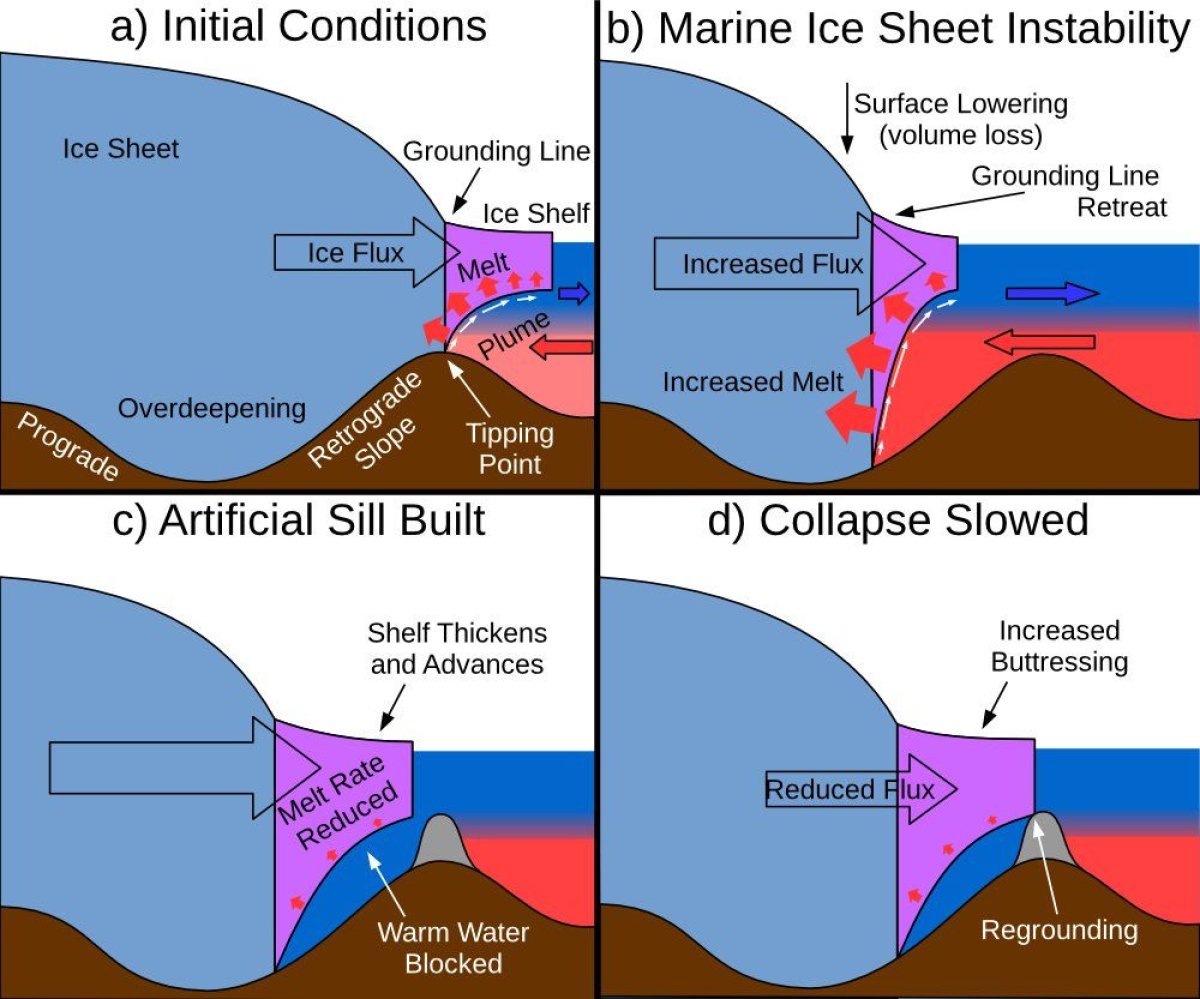To prevent catastrophic sea level rise under continued global warming, scientists have proposed a radical new plan: Build a wall. But not just any wall—the biggest wall in the world.
Princeton's Michael Wolovick and John Moore, from the Beijing Normal University, say an artificial wall to stop warm water getting to Antarctica's glaciers would prevent further melting. This wall would be "the biggest civil engineering projects that humanity has ever attempted" and, at its most extreme design, would stretch the entire width of the Thwaites Glacier—between 50 and 60 miles.
The Thwaites Glacier is a huge mass of ice located in West Antarctica that currently accounts for about four percent of the global sea level rise. It is highly unstable, however, and scientists are becoming increasingly concerned about what would happen if it collapses. Previous research has indicated sea levels would rise by three meters—placing millions of people who live on low-lying islands and coastal areas at risk.
In their study published in the European Geosciences Union journal The Cryosphere, the scientists looked at the possibility of using geoengineering to prevent the collapse of the Thwaites Glacier. Geoengineering is the idea that we can artificially control the climate. Normally the most extreme proposals relate to solar radiation management, where more of the light from the Sun is reflected away from the planet, lowering global temperatures as a result.

However, there is some concern that solar radiation management techniques would not help with the warm currents melting glaciers. As a result, Wolovick and Moore say that instead of trying to change the entire global climate, we could look at targeted interventions in "high-leverage locations," like Thwaites.
In the study, the researchers looked at a range of designs that could help hold back the glacier under a number of scenarios. They discuss the economic feasibility and the timescale over which such an immense project could take place.
The most ambitious design, they write, would be an "artificial sill," providing a "continuous barrier built across the front of the glacier, designed to both block warm water transport and to provide physical buttressing should the floating ice shelf reground on it." At its most basic, the sill could be 300m-high artificial mounds or columns placed on the seafloor—the warm water would not be blocked, but it could help to hold back and support the glacier, potentially helping it to regrow.
As expected, computer models showed that the continuous wall would be most effective at saving the Thwaites Glacier, but even the smallest design had a 30 percent success rate.
The authors note that this sort of engineering project is completely infeasible at the moment—they do not expect humans to undertake such a mammoth task for another century or two. Even then, it would be an ambitious plan—not least because it would be building in one of the harshest environments on Earth. But this shouldn't stop scientists planning for the long term.
"We all understand that we have an urgent professional obligation to determine how much sea level rise society should expect, and how fast that sea level rise is likely to come. However, we would argue that there is also an obligation to try to come up with ways that society could protect itself against a rapid ice-sheet collapse," Wolovick said in a statement.

Peter Irvine, a scientist from Harvard University, who was not involved in the study and whose work focuses on climate and geoengineering, said Wolovick and Moore's paper is the only detailed proposal to halt the retreat of destabilized marine glaciers. He told Newsweek that he doubts the wall would be possible with today's technology, but that the ideas behind it are interesting.
"There are few environments that would be harder to work in than below an Antarctic ice shelf, i.e. in an incredibly remote location, with extreme weather, with the dangers of icebergs and ice collapses, and with construction taking place both under water and under ice. Furthermore, the most effective Antarctic sills the authors propose dwarf the greatest earthworks ever conducted and they were built in much more convenient locations," he said.
"I think this is an interesting scientific idea but it needs to be looked at by some marine and Antarctic engineers to work out if it is remotely feasible, even for much smaller glaciers."
Wolovick and Moore also say the reduction of greenhouse gas emissions is still the best way to mitigate future climate change. However, geoengineering may become a necessary lifeline: "If humanity does not get emissions under control, the only viable long-term goal of glacial geoengineering would be to manage, rather than prevent, the collapse," Wolovick told Newsweek.
Moore added: "I have been working on geoengineering for a while, almost everyone expected (and maybe hoped) there would be a show-stopper that would prove it would be worse than greenhouse gas climate change. That hasn't happened yet. But everyone working on this topic knows its a stop-gap measure to get us over the worst of the transition to sustainable non-fossil fuel burning future. It is not and cannot be a substitute for mitigation. There must be an exit strategy for any geoengineering before it starts."
This story has been updated to include quotes from Wolovick and Moore.
Uncommon Knowledge
Newsweek is committed to challenging conventional wisdom and finding connections in the search for common ground.
Newsweek is committed to challenging conventional wisdom and finding connections in the search for common ground.
About the writer
Hannah Osborne is Nesweek's Science Editor, based in London, UK. Hannah joined Newsweek in 2017 from IBTimes UK. She is ... Read more
To read how Newsweek uses AI as a newsroom tool, Click here.








